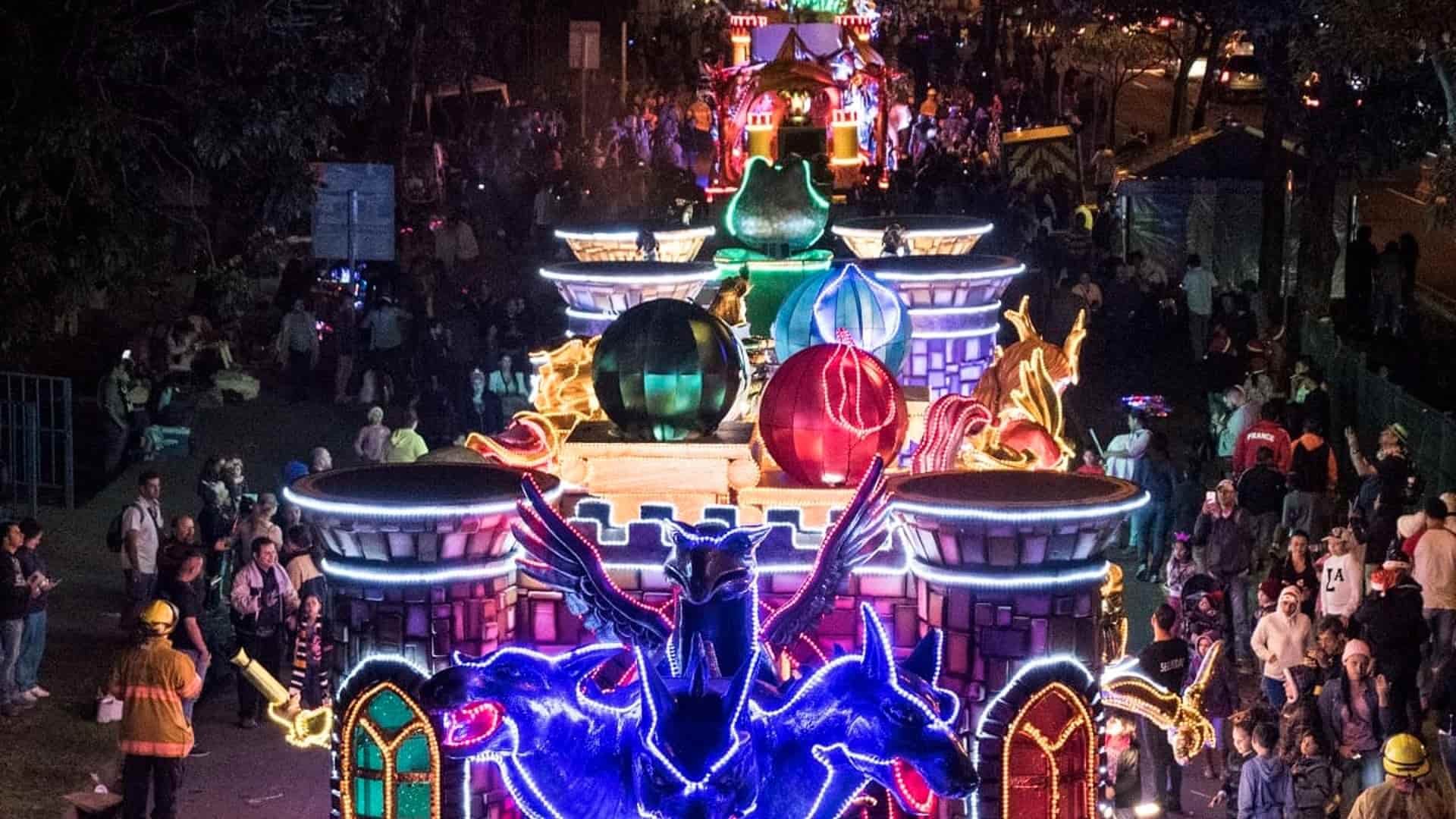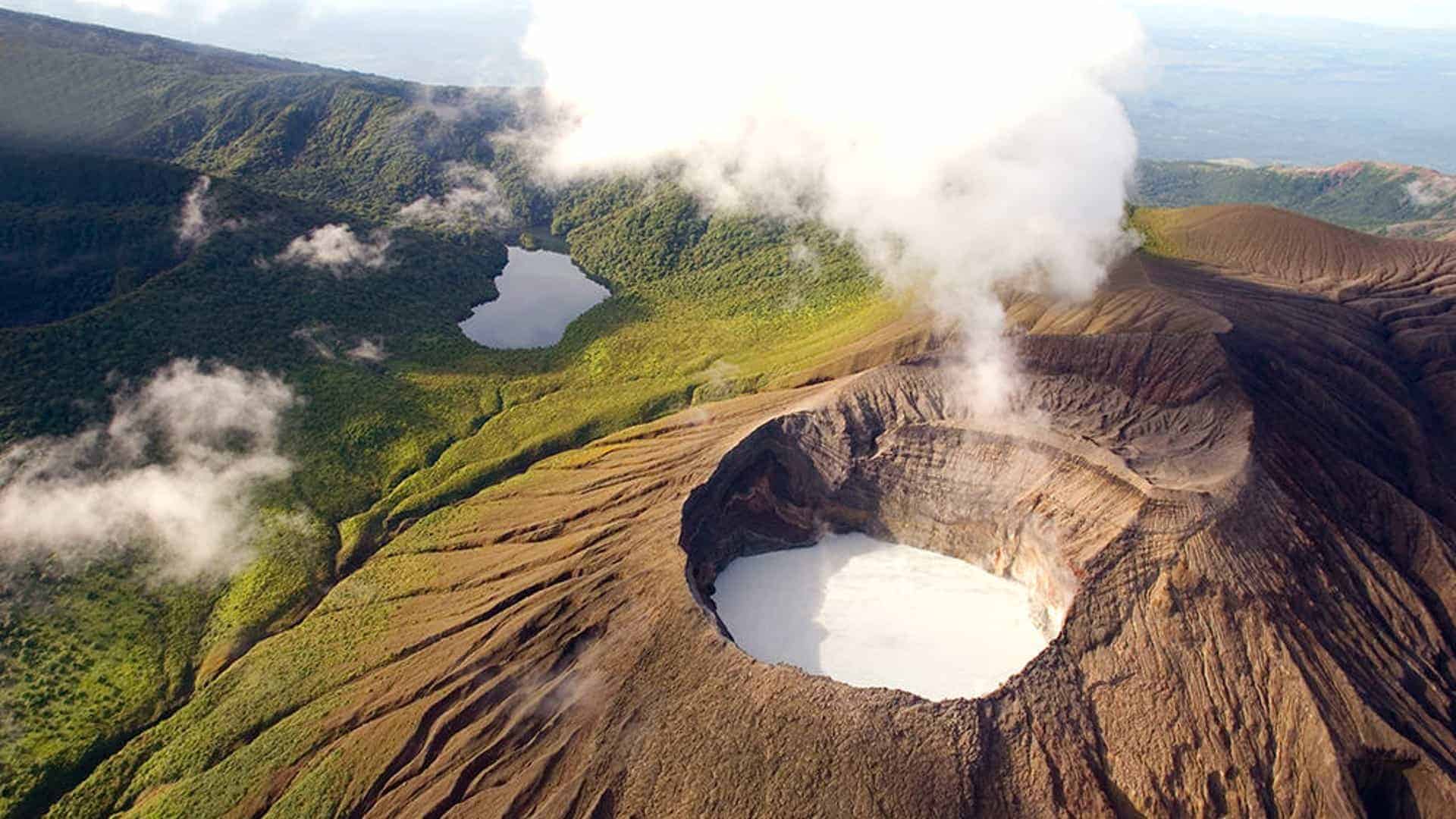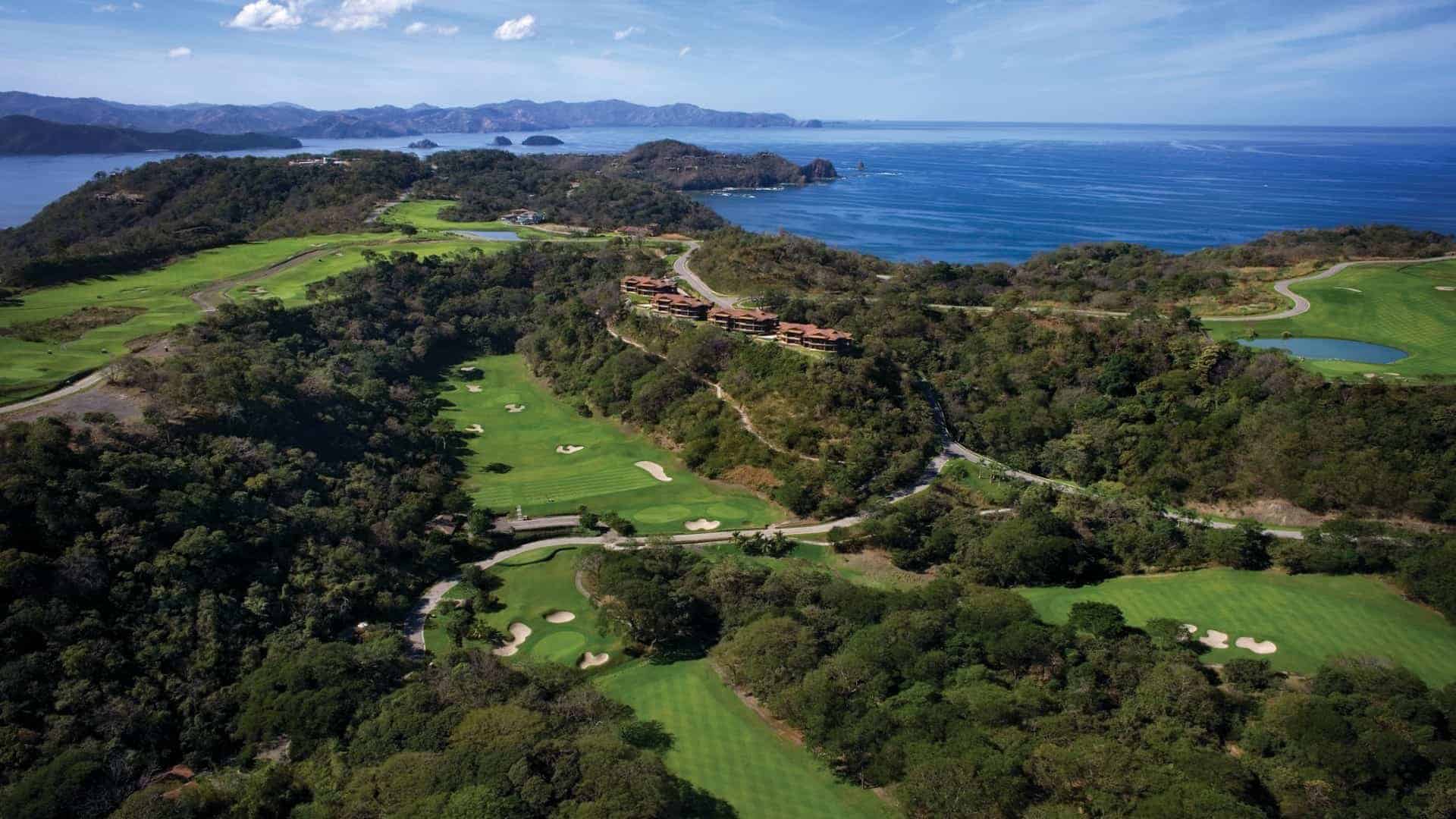Table of contents
- July 13, 2022
- in About Costa Rica, Culture
Costa Rica festivals are a fun way to experience the social and historic side of this beautiful country. Besides its amazing natural resources and breathtaking destinations, festivities will allow you to learn, share and celebrate with locals their own traditions.
If you are thinking of traveling to Costa Rica and would like to know what are the most celebrated festivals, then this article is for you. Buckle up and get ready to know in essence the great festivities that you can enjoy in your next trip to this paradise.
Fiestas de Palmares
Date: Two weeks in mid January
This is the first and the longest festival of the year, it lasts two weeks and it takes place in Palmares downtown.
This event offers a great variety of activities to satisfy the preference of all audiences. Among the list of options that visitors have there are: live concerts, a lantern parade, stand-up comedy, bullfights, a carnival, fireworks, and of course, loads of local food and beer.
Santa Cruz Festivities
Date: January 14th
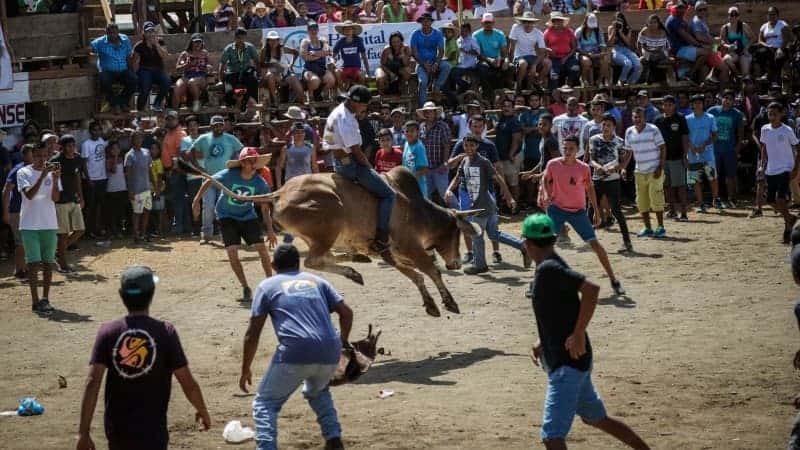
The characteristic religious festivities of the town of Santa Cruz, in Guanacaste, originated from the devotion of its inhabitants to “El Santo Cristo de Esquipulas”.
The celebrations include the enjoyment of typical gastronomy, bullfights, a horsemen parade, gunpowder games, many concerts and masquerades through the streets.
Puntarenas Carnival
Date: Last week of February
Known as the Carnival of the Queen, this event brings together parades that make their way through the center of the city of Puntarenas, on the Pacific Coast of Costa Rica.
Prepare to enjoy comparsas (groups of dancers), masquerades, men on stilts, local bands and more. Some recreational activities that are carried out are fishing, sporting events, concerts, a horseback riding parade, fireworks, and the coronation of the Carnival Queen.
National Boyero Day
Date: Second Sunday of March
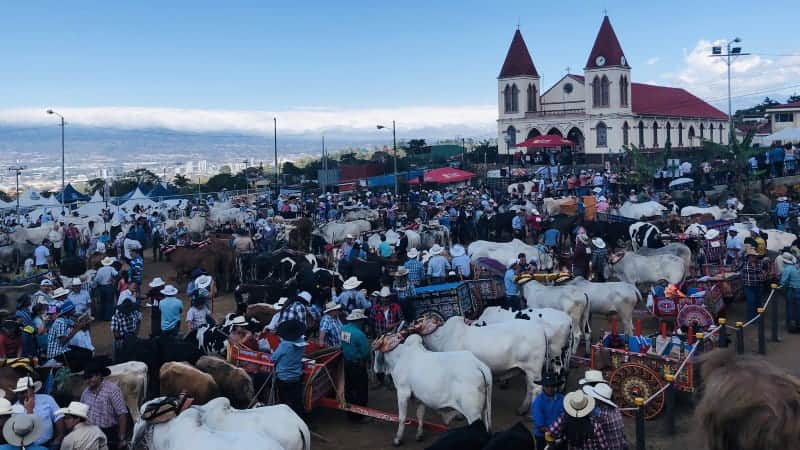
The celebration of this festival consists of colorful parades of carts from all over the country pulled by oxen.
The cart is a national symbol and the most recognized craft in Costa Rica. It draws attention for its bright colors, and hand-painted, unique designs. These traditional carts reinforce Costa Rican culture, as they are a symbol of the work done by farmers and coffee pickers. All the carts and oxen parade from Escazu downtown, to the Church of San Antonio, in a long caravan.
Some activities this festival offers are: fireworks, masquerades, music, folk dances, typical gastronomy and more.
Virgin of the Sea Day
Date: July 16th
The Virgin of the Sea Day is one of Costa Rica’s religious holidays, which matters a lot especially to the people of the city of Puntarenas. Annually, on a Saturday closest to July 16th, decorated fishing boats sail out to sea in a maritime procession. The purpose of the event is for fishermen to ask for protection from the Virgin for another successful year at sea.
Besides witnessing this unique religious celebration and colorful boats in the ocean, there is plenty of dancing, food and drink to be enjoyed by the attendees.
Subscribe to our newsletter
to stay up to date
Annexation of Guanacaste
Date: July 25th
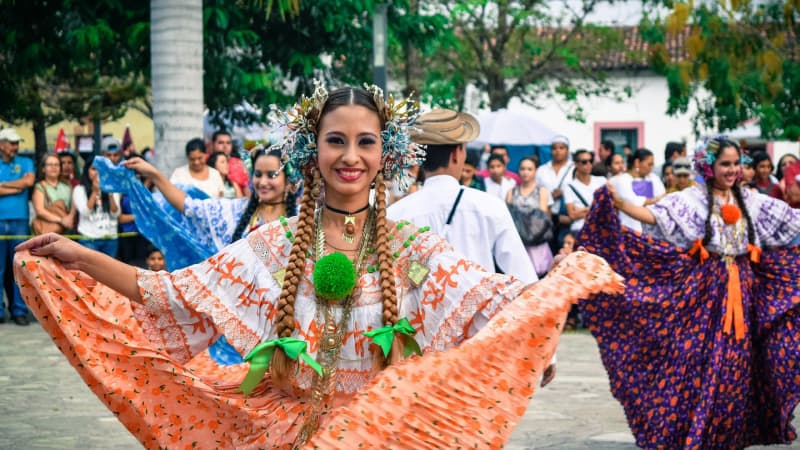
Costa Ricans celebrate on this day the annexation of the Nicoya district to the province of Guanacaste, making it an important historical event. This is an area that forms a large part of what is now this beautiful province.
Festivities on this day include bullfights, a horse parade, carnival rides, concerts, food stalls, dances, marimba music, and memorable cultural events.
Pilgrimage on Virgin of Los Angeles Day
Date: August 2nd
Virgin of Los Angeles Day is a significant religious festival in Costa Rica. This event gathers a few thousand people from across the country with the purpose of paying tributes to the patron saint.
The annual pilgrimage is one of the most deeply rooted, visible traditions for Costa Ricans, which takes place mostly from the capital city of San Jose to the Basilica Church in Cartago (around 22 kms).
The most traditional and religious ticos who partake in the ceremony, finish the remaining few steps of the journey on their knees to show their humble gratitude and devotion to the Virgin.
Lantern Parade
Date: September 14th
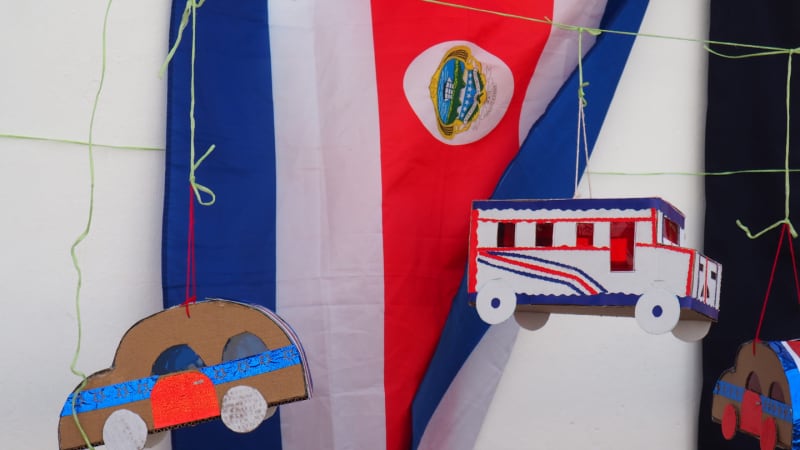
The lantern parade is part of the two-day Independence celebrations in Costa Rica. It usually takes place in the different “neighborhoods” of communities all across the country, starting at 6 p.m.
Part of the tradition is to elaborate each lantern from scratch. Children, accompanied by their parents and teachers, gather to tour the different streets with their lanterns lit, while the national anthem is sung when the clock strikes 6 p.m.
Independence Day (Día de la Independencia)
Date: September 15th
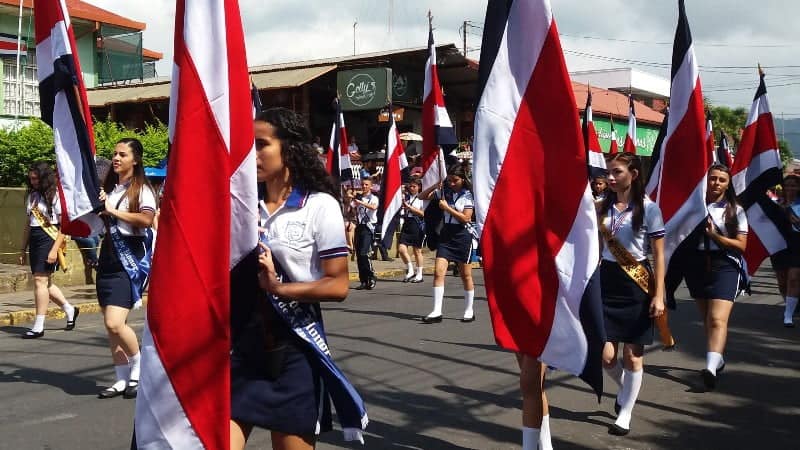
Most countries celebrate their independence day proudly, and Costa Rica is no exception.
The customary way of celebrating Costa Rica’s independence day is through a traditional parade of bands from schools across the country. The joyful melodies are played from around 7:30 am to past noon. Streets are usually closed during that time, and everybody goes out to enjoy the musical display of school bands while remembering their blessed freedom.
Limon Carnival
Date: A whole week in mid October
The Limon Carnival is a week-long, annual celebration that takes place in the city of Puerto Limon, in the Caribbean coast of Costa Rica.
It offers a magnificent opportunity for visitors to experience the unique culture of this locality. Vibrant Caribbean rhythms, floats, parades, traditional food, folk dancing, music, colorful decorations and bright costumes are part of the experience visitors can expect.
This festival commemorates the arrival of Christopher Columbus and other Spanish conquistadors to the island of Uvita in 1502, located in front of Puerto Limon.
Masquerades Day
Date: October 31st
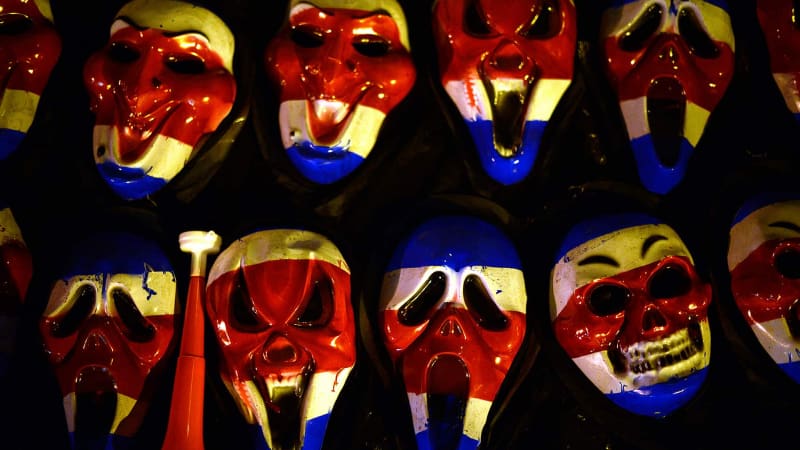
Masquerades Day is one of the happiest and most popular Costa Rica festivities. It consists of a lively display of hand-made masks representing characters from national legends.
These street parties are usually accompanied by traditional folk music. Its value as intangible cultural heritage stands out by evidencing three essential factors.
First, the knowledge required by people who carry tradition to take advantage of natural materials to create the masks. Second, the knowledge about some craft techniques applied; and finally, the contribution of the maroon music and the dance of the masquerades, which animate the parades.
Festival de la Luz
Date: Second Saturday in December
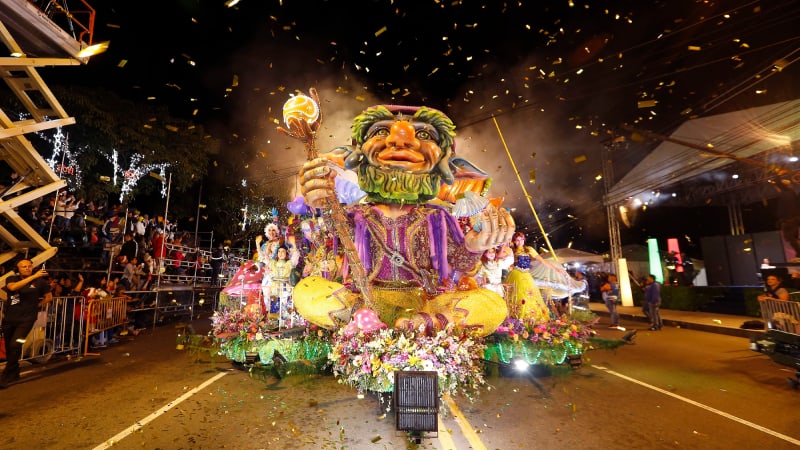
Opening the holiday season, Festival de la Luz (Light Festival) in Costa Rica takes place in Paseo Colon (San Jose downtown). It is the most important and long-awaited popular event of the year.
Festival de la Luz consists of a parade of floats, along a route of almost 5 kilometers. The event begins at 6pm, once it is dark, allowing the fantastic display of magic, creativity, lights and shine of each of the participating floats to impress the audience.
The festival of light also has the presence of masquerades, live music and fireworks.
Fiestas de Los Diablitos
Date: December 30th-Jan 2nd
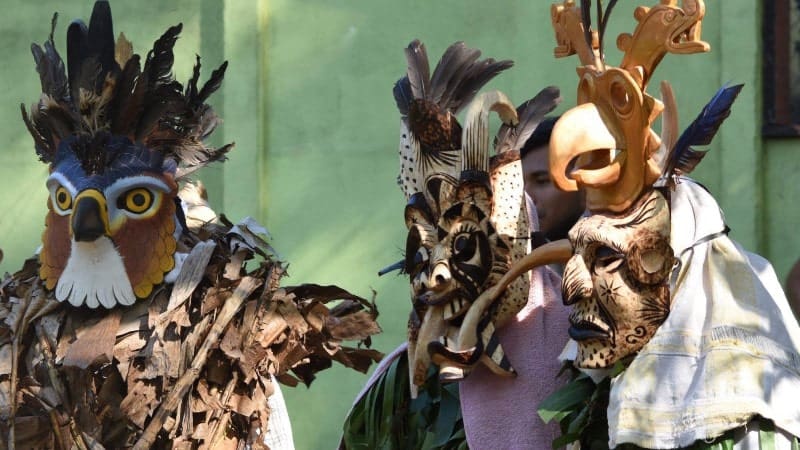
This ancient tradition is celebrated right at the end of the Christmas season, in two indigenous communities: Boruca and Rey Curre, located in the province of Puntarenas.
This cultural festivity represents the historical drama of the conquest, where people wear traditional Boruca masks (resembling little devils and representing the Boruca indigenous) and another person (disguised as a bull) represents the Spaniard conquerors. The dance and games performed emphasizes the indigenous resistance to colonization.
In addition to the already mentioned characters, several musicians participate playing the flute, the traditional drum called the cajon, the guitar, the violin and the accordion.
These great festivals play a very important role in the preservation of cultural elements of Costa Rican traditions. They show the main customs, habits and behaviors of the inhabitants of different territories where they are held.
These festivities will also allow you to enjoy your trip from an interesting social perspective, transforming it into a well-rounded and rich experience.
FAQS
How many festivals are in Costa Rica?
There are over 50 festivals that are celebrated in Costa Rica.
What is the longest festival in Costa Rica?
The longest festival in Costa Rica is Fiestas de Palmares, which lasts for two whole weeks.
Subscribe to our newsletter
to stay up to date

Carol Aldi
More articles From
Book Your
Costa Rica Vacation
RELATED POSTS
- April 16, 2024
- About Costa Rica, Culture
- April 2, 2024
- About Costa Rica, Things To Do
